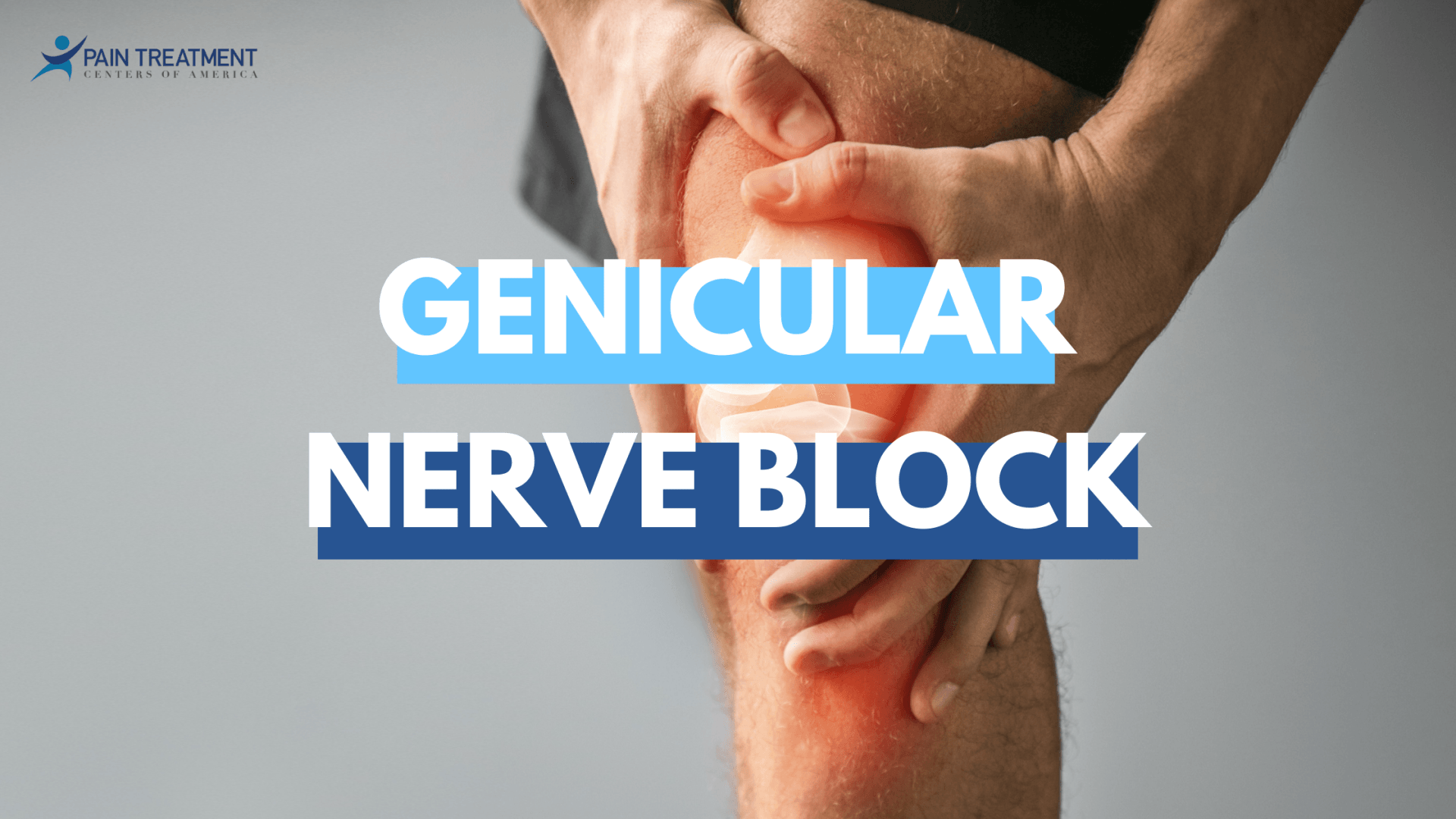Call for more information: (844) 215-0731
New Patient Department:
(501) 254-0967
Referrals (Fax): (888) 630-8885
Medical Records (Fax): (501) 476-5707
Genicular Nerve Block FAQs + Info
The knee is one of the main weight-bearing joints of the body. As a result, it undergoes a lot of wear and tear throughout our lives. Injuries, diseases, failed surgery and the normal effects of aging can eventually cause significant knee pain that worsens as we age.
Anyone with chronic knee pain knows how big of an impact it can have on work, fitness, and daily chores. For people with advanced knee arthritis, pain often persists even when sitting or laying down.
As osteoarthritis progresses in the knee joint, pain and knee stiffness can become unbearable. Lifestyle changes, such as weight loss, may provide initial relief, but as arthritis progresses, the pain always returns. Eventually, it may also stop responding to traditional treatments. At this point, many patients elect to undergo a knee replacement.
For many people, however, surgery is not an option due to coexisting diseases or health concerns. These patients may elect to explore newer and more advanced non-surgical treatment options, such as nerve ablation.
Pain Treatment Centers of America specializes in diagnosing and treating chronic knee pain using cutting edge techniques and procedures, including genicular nerve block and radiofrequency ablation.
What Is Genicular Nerve Block?
The word “genicular” refers to the various arteries (femoral and popliteal) and nerves that feed into the knee. For people with knee osteoarthritis, the pain signals delivered by these nerves can become unbearable.
A genicular nerve block temporarily blocks the nerve signals in the knee. If you experience effective pain relief following a nerve block, your pain specialist may recommend genicular nerve ablation to treat your knee pain.
During the GNB procedure, your doctor will target the superior medial, the superior lateral and the interior medial nerves of your knee with anesthesia. The anesthesia numbs the nerves and prevents them from sending a pain signal to the brain.
Is Genicular Nerve Block Painful?
Genicular nerve block procedures require the use of a needle. For many people, the injection causes mild pain. However, IV sedation can help relieve discomfort or anxiety before and during the procedure.
Are There Risks Associated With Genicular Nerve Block?
GNB is a non-surgical procedure that carries few risks. However, some cases of adverse side effects have been reported. These side effects include pain, redness or swelling at the injection site, nausea and dizziness.
What To Expect Following A Genicular Nerve Block
Following your GNB, you should pay close attention to your pain levels. Pain relief should occur almost immediately after the injection, and should last at least a few hours. Patients who experience significant pain relief from the injection are often good candidates for nerve ablation, which cauterizes the nerves in the knee. Genicular nerve ablation can provide pain relief for up to 18 months .
Are you experiencing chronic knee pain that hasn’t responded to treatment? A genicular nerve block can help diagnose the source of your pain.
Pain Treatment Centers of America is proud to specialize in genicular nerve block and ablation in Arkansas. Contact us today to schedule your appointment: 844-215-0731.




Call usReferrals (Fax)(888) 630-8885
Patient Support Hours
Monday - Thursday 8:00 - 5:00

All Rights Reserved | Pain Treatment Centers of America | Arkansas | Mississippi | Texas




